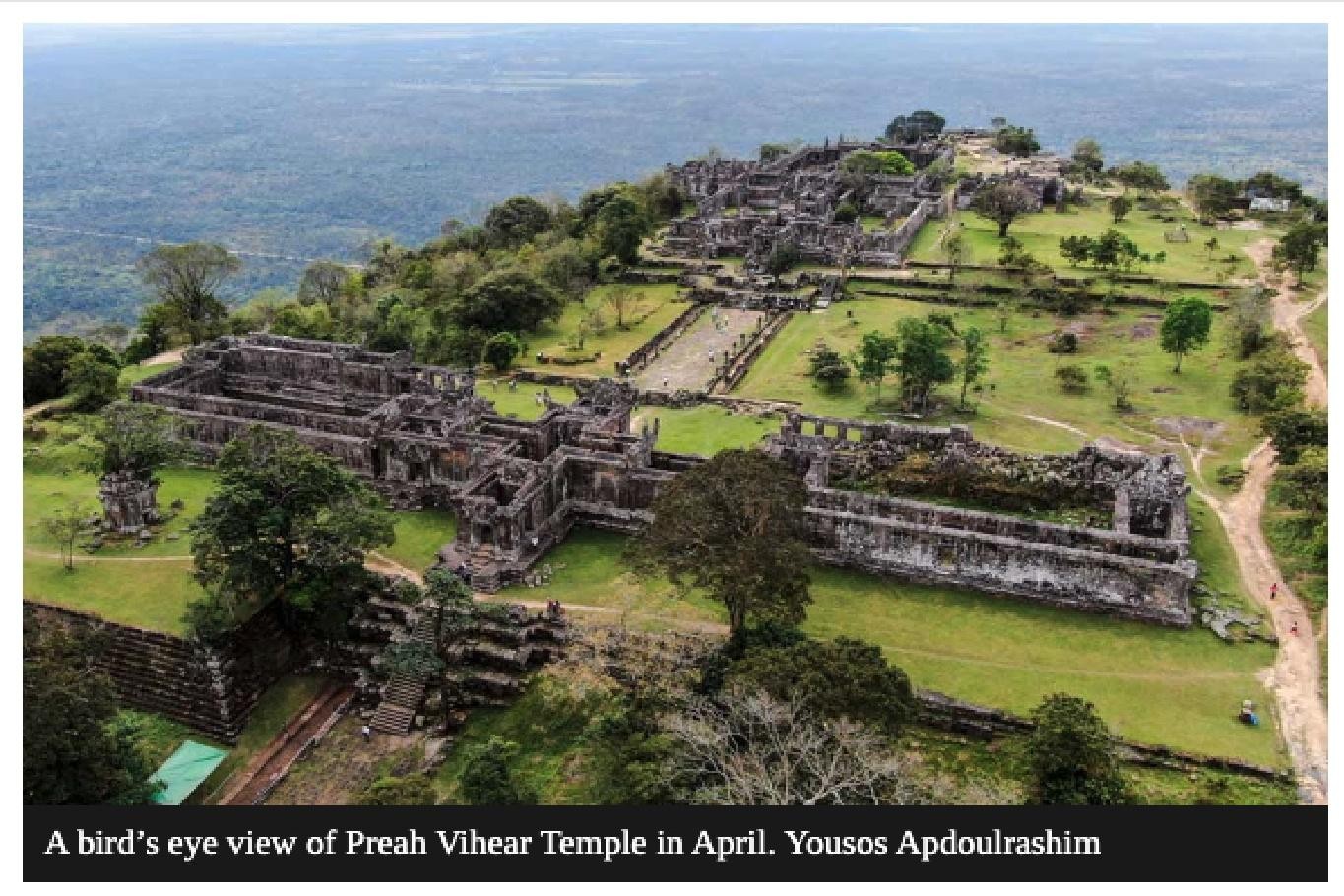
For more than a hundred years, Cambodia and Thailand have been locked in a heated dispute over the ownership of the ancient Hindu temple, Preah Vihear. This contention dates back to Cambodia’s independence in 1954 when Thailand assumed control of the temple, leading to ongoing tensions between the two nations. The disagreement extends beyond just the temple itself, with conflicts over the surrounding land exacerbating the situation, occasionally erupting into violence. Notably, a clash occurred in October 2008, and in April 2009, Thai soldiers reportedly caused damage to 66 stones of the temple by firing across the border. Moreover, in February 2010, the Cambodian authorities lodged a formal complaint against Google Maps. They objected to its depiction of the natural watershed as the international boundary, which diverged from the line outlined in the 1907 French map accepted by the International Court of Justice in 1962.
Perched atop a 1,722-foot cliff in the Dângrêk Mountains of Cambodia’s Preah Vihear province, the Preah Vihear Temple holds significant historical and religious importance as a Hindu temple constructed during the Khmer Empire era. Over time, it has undergone alterations and received patronage from various monarchs, resulting in a fusion of architectural styles. Unlike typical Khmer temples, Preah Vihear follows a unique long north-south axis instead of a rectangular plan. Its name is derived from the Preah Vihear province where it currently stands and is closely linked with the Khao Phra Wihan National Park, located in Thailand’s Sisaket Province, although access from Thailand is no longer available. Recognizing its cultural significance, the temple was granted UNESCO World Heritage status in 2008, sparking further political maneuvering from both Thai and Cambodian nationalists. Beyond its cultural value, the temple represents a potential source of substantial tourist revenue for Cambodia.











3 Comments
Интеллектуальные поисковые системы для анализа данных становятся всё более удобными.
Они позволяют изучать доступные данные из разных источников.
Такие решения используются для журналистики.
Они способны быстро обрабатывать большие объёмы контента.
проверить человека глаз бога
Это позволяет сформировать более точную картину событий.
Отдельные системы также обладают инструменты фильтрации.
Такие сервисы широко используются среди аналитиков.
Развитие технологий делает поиск информации доступным и удобным.
Получение вида на жительство за границей становится всё более актуальным среди жителей России.
Такой статус даёт широкие горизонты для жизни.
ВНЖ помогает свободнее передвигаться и получать доступ к другим странам.
Также подобное решение может улучшить уверенность в будущем.
Паспорт Ирландии
Большинство граждан рассматривают возможность переезда как путь к независимости.
Получив ВНЖ или второй паспорт, человек получить образование за рубежом.
Разные направления предлагают разные условия получения гражданства.
Именно поэтому идея второго паспорта становится всё более значимой для тех, кто планирует развитие.
Discount codes are special combinations of alphanumeric characters that provide reduced prices.
They are widely applied by brands to encourage shopping.
Such codes allow users to cut their costs when purchasing online.
Many people appreciate promo codes because they make shopping more affordable.
https://dosweeps.com/no-deposit
Various websites share these codes through special announcements.
Using them is usually simple and requires only entering the code during checkout.
Promo codes also help companies enhance loyalty by offering limited-time rewards.
Overall, they serve as a practical feature for anyone who wants to reduce spending.